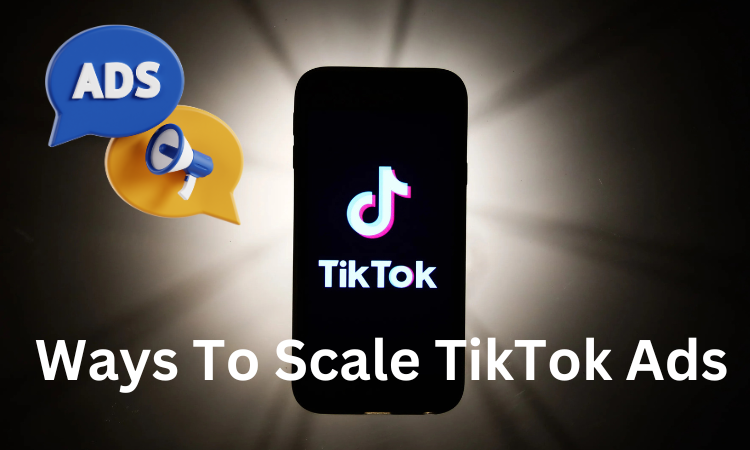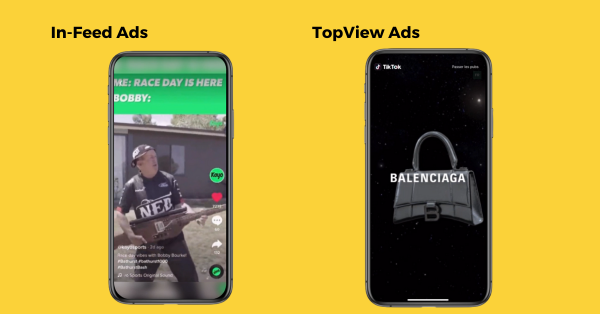How to Scale Winning Audiences in TikTok Ads
Scaling winning audiences is essential for maximizing the performance of your TikTok advertising campaigns. When you identify a high-performing audience that brings in the best results, scaling allows you to reach a broader audience while maintaining or improving the cost-effectiveness of your campaigns. Here’s how to scale winning audiences effectively:
1. Understand the Concept of Scaling
Scaling your TikTok ads means increasing the reach and budget of your campaigns while keeping the results consistent or improving. Scaling helps you get more conversions, traffic, or awareness without compromising on performance.
2. Identify Your Winning Audiences
Before scaling, it’s crucial to know which audiences are generating the best results. To do this, monitor key metrics like:
- Conversion Rate: How often people take the desired action (purchase, sign-up, etc.).
- Return on Ad Spend (ROAS): How much revenue is generated for every dollar spent.
- Cost Per Acquisition (CPA): How much it costs to acquire a customer.
- Engagement Rate: Interaction with your content, such as likes, shares, and comments.
Once you’ve identified the audience segments that are delivering the best results, you can begin to scale them.
3. Gradually Increase the Budget
One of the most straightforward ways to scale is by gradually increasing your ad spend. Here’s how to do it effectively:
- Start Small: Avoid making big changes all at once. Increase your budget by 20-30% at a time. This helps the TikTok algorithm adapt to the increased spend without a significant drop in performance.
- Monitor Performance: After each increase, monitor your results for at least 24-48 hours. This will give the system time to optimize for the new budget.
- Avoid Drastic Budget Changes: Significant budget increases all at once can lead to ad fatigue and performance instability. Incremental increases allow for more controlled scaling.
4. Duplicate Winning Ad Sets or Campaigns
Instead of simply increasing the budget, you can duplicate your best-performing campaigns or ad sets. By duplicating:
- New Campaigns: Duplicate the ad set to create a new campaign with a higher budget or different targeting. This allows TikTok’s algorithm to work with fresh data and reach a larger audience while maintaining the previous settings that worked.
- New Audiences: When duplicating, experiment with slightly different targeting options, such as age range, gender, interests, or behavior to reach a broader group. For instance, if your winning audience was aged 18-24, try expanding it to 18-35.
- Different Placements: You can also experiment with new placements or adjust how your ad appears across different devices, making sure your ads reach more users within your chosen target.
5. Expand Your Targeting
Once you’ve found a winning audience, it’s time to expand your targeting to include similar users. Here’s how to do this:
- Lookalike Audiences: Create lookalike audiences based on your winning audience. A lookalike audience allows you to target users who share similar traits and behaviors to your best customers, increasing your chances of finding new prospects.
- Interest Targeting: If you are targeting a specific interest group, consider adding related or broader interest categories. For example, if you’re targeting fitness enthusiasts, expand to target people interested in health and wellness in general.
- Behavioral Targeting: Include behaviors such as online shopping, app usage, or people who frequently engage with similar content to your ad. This helps you find users who are more likely to engage with your campaign.
6. Use Broad Targeting
While specific audience targeting is great, scaling often requires adopting broader targeting to reach more users. Broad targeting works because TikTok’s algorithm uses machine learning to find users who are most likely to convert based on your ad’s performance.
- Avoid Narrowing Too Much: When scaling, try not to make your targeting too specific. This limits the algorithm’s ability to find new users who might convert.
- Test Different Age Ranges: If you initially targeted users aged 18-24, try expanding the range to 18-35 or even 18-44 to see how the algorithm performs.
- Location Expansion: If you are targeting a specific region, consider expanding to nearby locations or nationwide if your business can support it.
7. Use Automated Bidding
When scaling, manual bidding can become cumbersome, and you may miss opportunities to optimize efficiently. TikTok’s automated bidding options help ensure that you get the most out of your budget while scaling.
- Target Cost Bidding: This method aims to achieve the target cost per conversion that you set while automatically adjusting bids based on performance.
- Maximize Conversions: If your goal is to increase conversions, use this automated bidding strategy. TikTok’s algorithm will optimize for more conversions, adjusting your bids as needed.
8. A/B Testing for Continuous Optimization
As you scale, continuously optimize your campaigns by running A/B tests. This allows you to identify which creatives, copy, and targeting settings work best as you expand.
- Test Different Creatives: As you scale, new creative formats or ideas might perform better. Test different versions of your ad creatives to see what resonates with a larger audience.
- Test Copy Variations: Slightly altering your call-to-action or the tone of your messaging can influence how new users engage with your ad.
- Test Landing Pages: Sometimes scaling requires adjusting your landing page to ensure it can handle increased traffic or provide a better user experience.
9. Use Retargeting to Reinforce Engagement
Retargeting your audience after they’ve already interacted with your ads is a powerful way to increase conversions as you scale. By retargeting:
- Nurture Leads: Show ads to users who have engaged with your brand before but haven’t completed a conversion. This could be people who visited your website, added to cart, or interacted with your videos.
- Tailored Ads: Use dynamic creative ads to show more personalized content based on previous interactions. This can help users feel more connected to your brand.
10. Scale Across Multiple Ad Formats
When scaling, consider using multiple ad formats to see what works best across larger audiences. TikTok offers several formats, including:
- In-Feed Ads: The standard ad format that appears within users’ feeds.
- Branded Hashtag Challenges: Engage users by creating challenges related to your brand, encouraging viral participation.
- TopView Ads: These ads are the first thing users see when they open the app, allowing for maximum exposure.
By using multiple formats, you can diversify your approach and increase the chances of success when scaling.
11. Monitor and Optimize
After scaling your campaign, closely monitor the performance metrics. Watch for signs of ad fatigue, such as rising CPA or falling engagement rates. If you notice performance dip:
- Pause underperforming ads: If certain ads or creatives aren’t performing, pause them and redirect the budget to high-performing ones.
- Refine targeting: If the broad audience becomes too diluted, refine your targeting or return to a more narrow approach.
Conclusion
Scaling winning audiences on TikTok ads is about strategically increasing reach while keeping the performance strong. By gradually increasing budgets, testing new audiences, using lookalikes, broadening targeting, and continuously optimizing, you can scale your campaigns effectively and maintain or improve your performance. Remember, scaling should be done carefully and incrementally to ensure you continue reaching relevant users without sacrificing your ad results.




